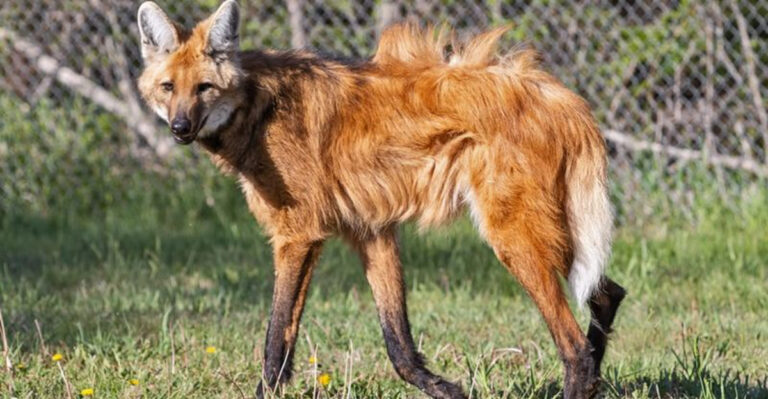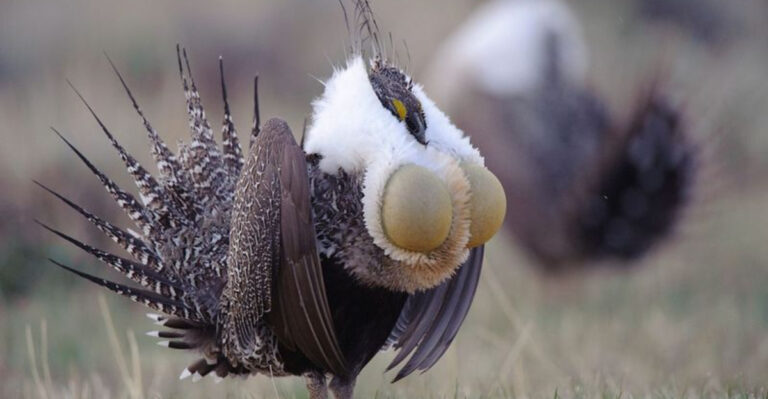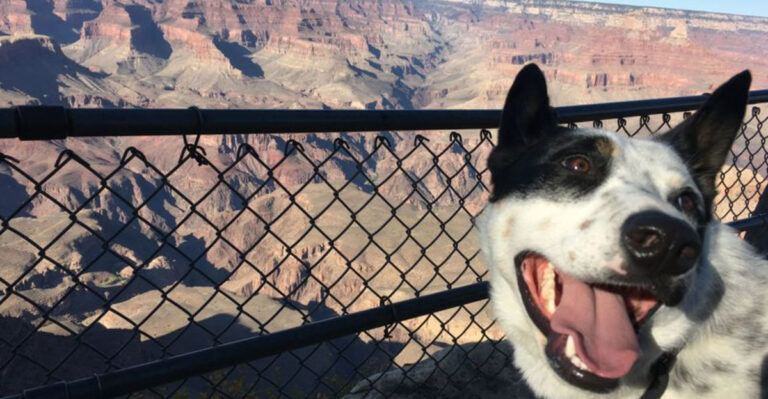How To Introduce A Puppy To An Older Dog, And When To Be Concerned
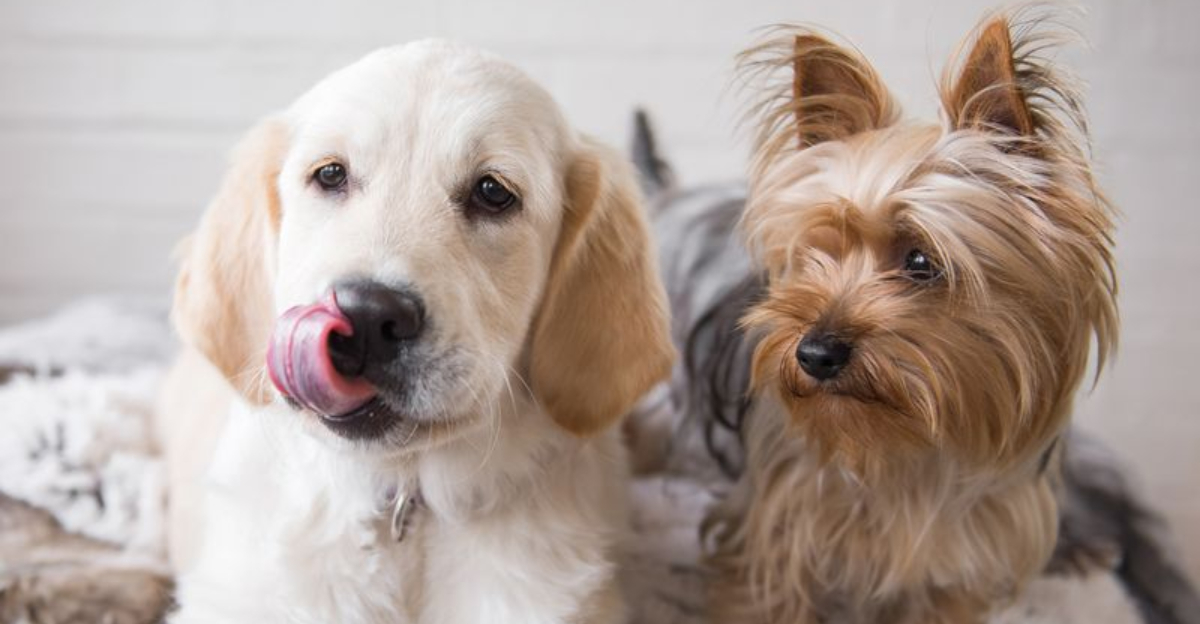
Bringing a new puppy home when you already have an older dog can be both exciting and nerve-wracking. The first meeting between these two furry family members sets the tone for their future relationship.
While many introductions go smoothly, there are legitimate concerns that might arise as they adjust to sharing their space and your attention.
1. Neutral Territory First Meetings
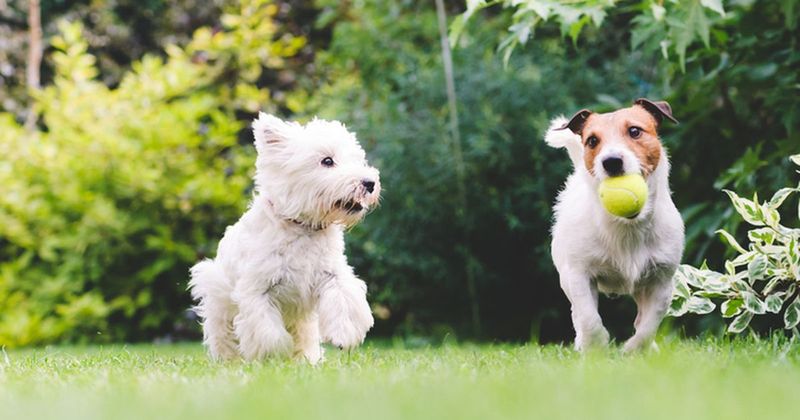
Meet on neutral ground like a park or friend’s yard where neither dog feels territorial. Your older dog won’t feel like their space is being invaded, and the puppy won’t be overwhelmed by unfamiliar territory all at once.
Keep both dogs on loose leashes during this initial encounter. Watch their body language carefully for signs of comfort or stress. Multiple short meetings are better than one long, potentially overwhelming session.
2. Respect Your Older Dog’s Space
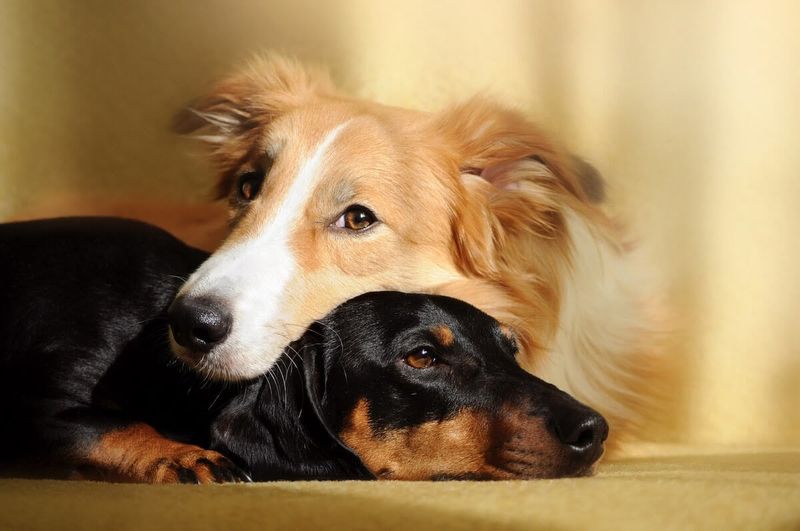
Create puppy-free zones where your older dog can retreat when they need peace. Use baby gates or closed doors to section off these sanctuary spaces. Your senior companion deserves quiet time away from puppy energy.
Make sure these areas have your older dog’s favorite bed, toys, and water. Puppies are naturally curious and can be overwhelming, so these boundaries aren’t mean—they’re necessary for your older dog’s mental health and stress management.
3. Separate Feeding Stations
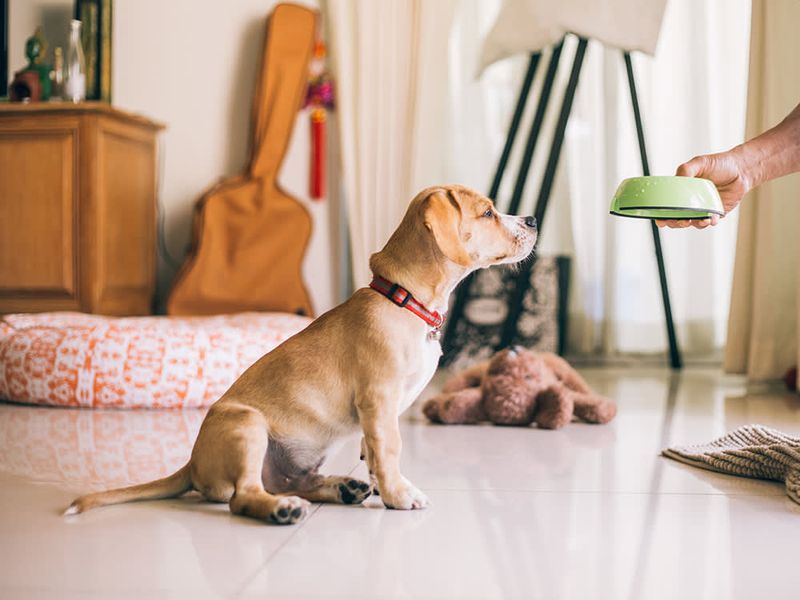
Food aggression can emerge even in normally calm dogs when a new puppy arrives. Set up feeding areas in different rooms to prevent resource guarding and mealtime stress. This simple step avoids a common trigger for conflict.
Monitor both dogs during meals until you’re confident about their behavior. Some older dogs become protective of their food bowls after years of eating in peace. Feed the puppy in a crate initially if your older dog seems particularly concerned about food resources.
4. Supervised Play Sessions Only
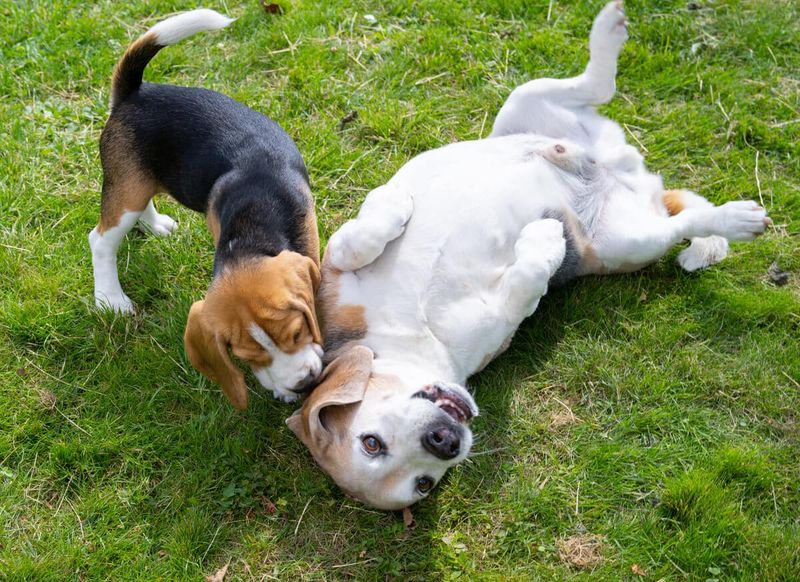
Never leave a puppy and older dog alone together until you’re absolutely certain of their compatibility. Puppies often don’t understand boundaries and may unintentionally provoke your senior dog with their endless energy and playful nipping.
Keep play sessions short at first—5 to 10 minutes is plenty. Watch for signs your older dog is getting tired or irritated. Step in before either dog becomes frustrated, ending on a positive note each time.
5. Individual Attention Matters
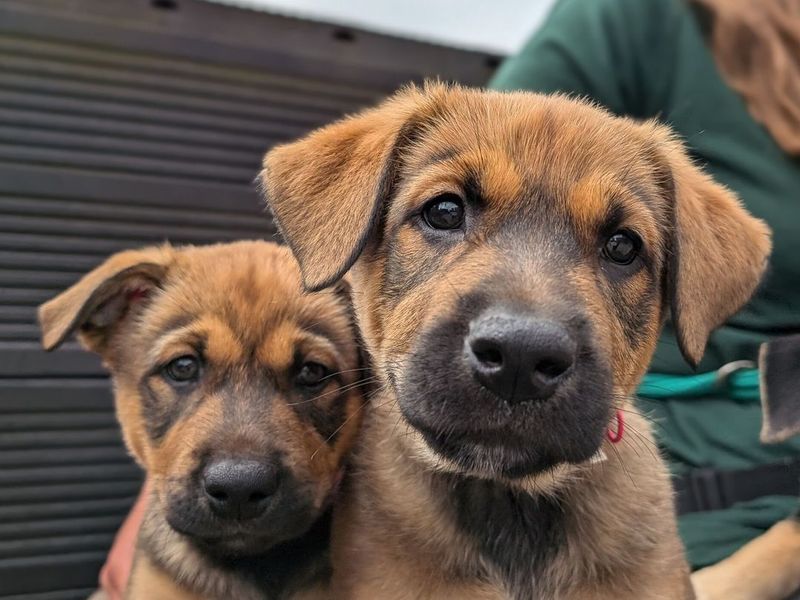
Carve out special one-on-one time with your older dog every day. This reassures them they haven’t been replaced by the cute newcomer. A daily walk without the puppy or a quiet cuddle session reinforces your bond.
Your senior dog has been your loyal companion for years. Maintaining your special routines helps prevent jealousy and depression. Watch for signs your older dog feels neglected, like unusual clinginess or withdrawal from family activities.
6. Scent Exchange Before Face-To-Face
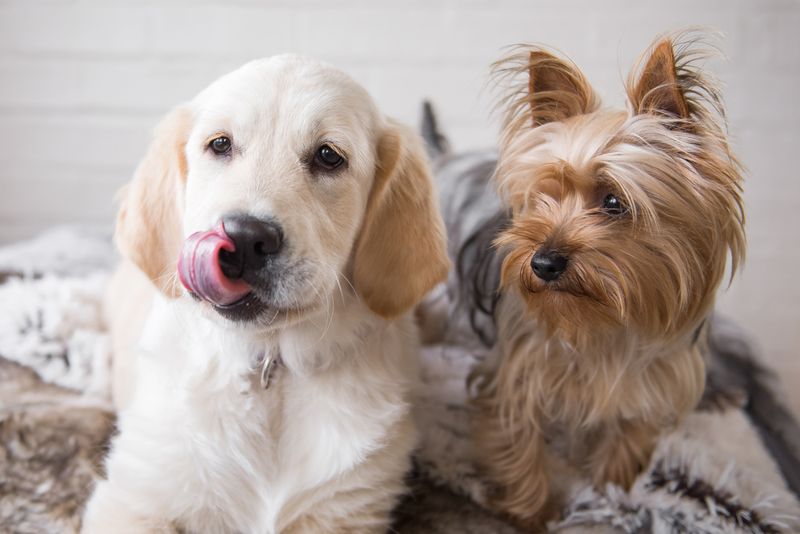
Swap blankets or toys between the dogs before they actually meet. This clever trick allows each dog to become familiar with the other’s scent in a non-threatening way. Your older dog can investigate the new puppy smell at their own pace.
Consider rubbing a towel gently on each dog and placing it in the other’s area. This gradual scent introduction builds familiarity without the chaos of a direct meeting, reducing tension when they finally see each other.
7. Watch For Concerning Body Language

Learn to recognize stress signals in your older dog. Lip licking, yawning when not tired, whale eye (showing whites of eyes), and stiff posture are warning signs they’re uncomfortable with the puppy’s behavior.
Growling actually serves an important communication purpose. If your older dog growls at the puppy, don’t punish them—they’re setting boundaries. Instead, redirect the puppy to give your older dog space. Intervene before either dog becomes too agitated.
8. Health Changes In Your Older Dog
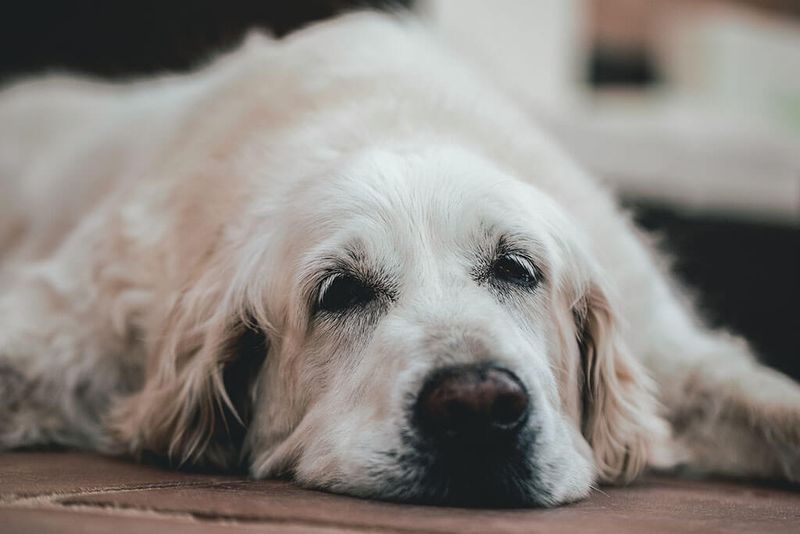
Monitor your senior dog for signs of stress-related health issues. Decreased appetite, digestive problems, or excessive shedding might indicate the new situation is taking a toll. Contact your vet if these symptoms persist.
Some older dogs develop joint pain that makes puppy interactions painful. Watch for limping or reluctance to move after play sessions. The constant need to be alert around an energetic puppy can also disrupt your older dog’s sleep patterns, affecting their overall health.
9. Training The Puppy To Respect Seniors
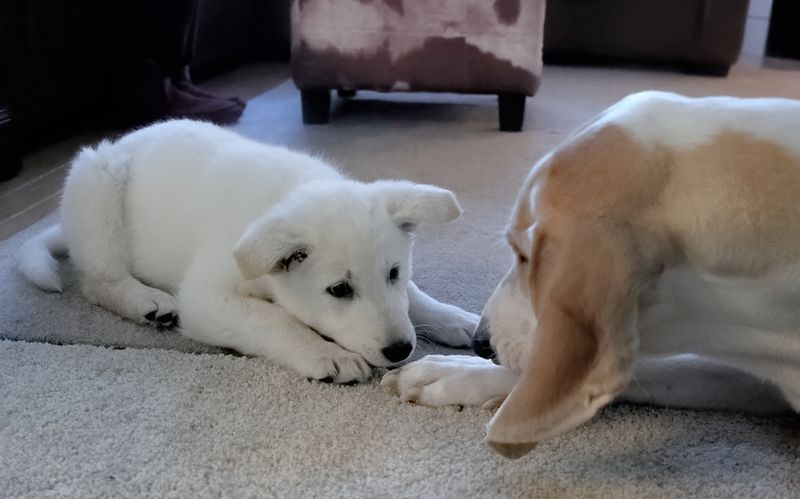
Teach your puppy basic commands like “leave it” and “gentle” specifically for interactions with your older dog. Consistently redirect jumping, nipping, or pestering behaviors that bother your senior pet.
Reward your puppy for calm behavior around the older dog. This positive reinforcement helps them learn appropriate interaction skills. Consider puppy training classes that focus on socialization with dogs of different ages and energy levels.
10. Exercise The Puppy Separately
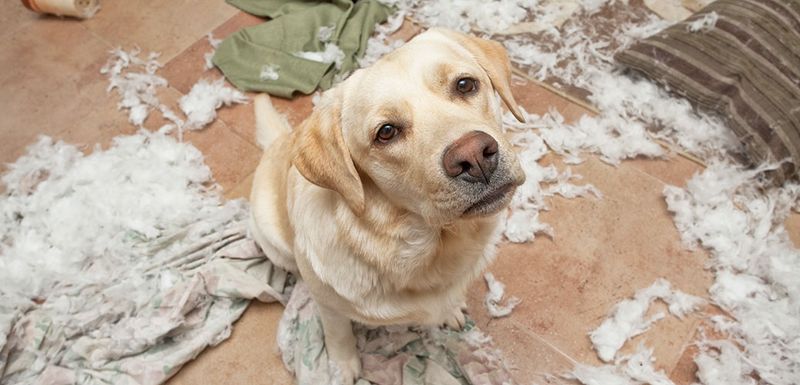
Channel your puppy’s boundless energy through separate play and exercise sessions. A tired puppy is less likely to pester your older dog constantly. Consider puppy playdates with dogs of similar age and energy level.
Interactive toys, training games, and backyard play can help burn off puppy energy. Your older dog will appreciate the calmer household atmosphere that results. Remember that puppies need more physical activity than senior dogs, so their exercise needs shouldn’t be matched.
11. Depression Signs In Your Older Dog
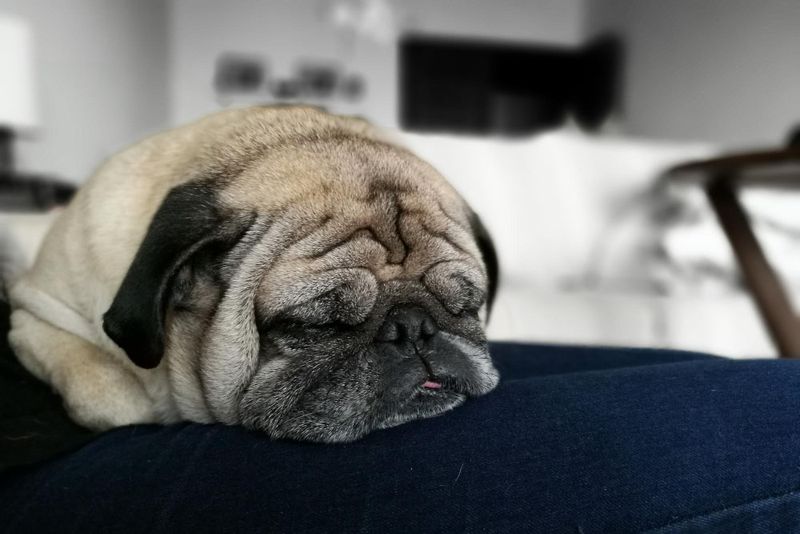
Watch for withdrawn behavior in your senior dog. If they suddenly avoid family gatherings, lose interest in favorite activities, or sleep excessively, they might be experiencing depression related to the new puppy.
Some older dogs retreat to unusual hiding spots when feeling displaced. Others may show decreased appetite or become unusually clingy. These behavioral changes warrant attention and possibly veterinary consultation. Depression in dogs is real and requires compassionate intervention.
12. When To Consider Professional Help
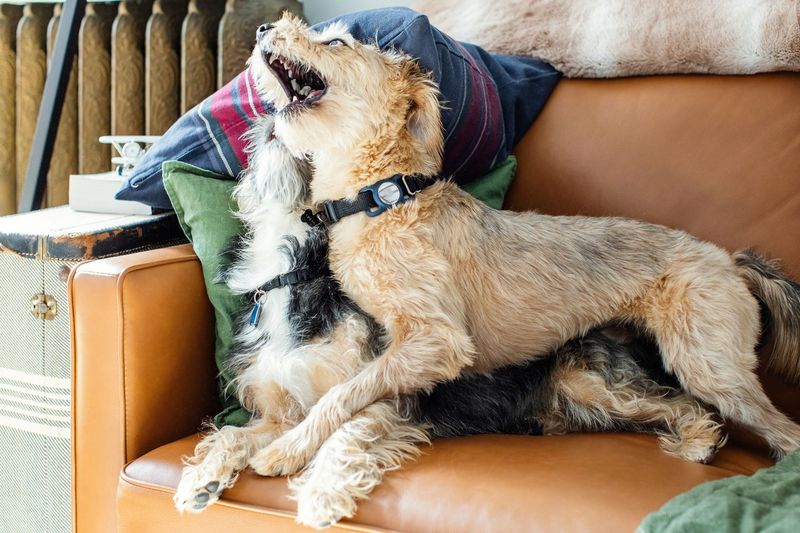
Seek a professional dog trainer or behaviorist if tensions persist beyond a few weeks. Ongoing growling, snapping, or resource guarding might require expert intervention. Don’t wait until a serious incident occurs.
Some dog combinations simply have personality conflicts that need specialized management strategies. A professional can observe subtle interaction patterns you might miss and suggest targeted solutions. They can also help determine if the issues stem from health problems, anxiety, or territorial concerns.
13. Knowing When Separation Is Necessary
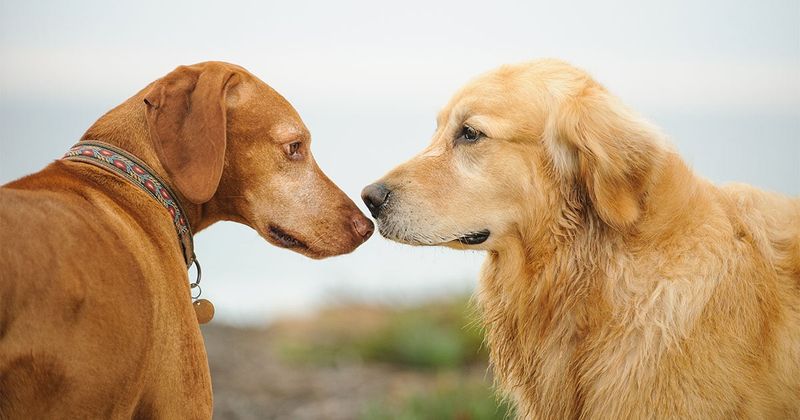
In rare cases, permanent separation might be the safest option. If your older dog shows consistent aggression or extreme stress despite all interventions, maintaining separate living spaces could be necessary.
Some households successfully manage this with rotating schedules and careful space management. This isn’t failure—it’s responsible pet ownership prioritizing both animals’ wellbeing. Consider the long-term quality of life for both dogs before making this difficult decision.



